Coco Chanel hated them. London girls demanded them. Paris designers tolerated them. The 1960’s mini skirt had taken over the world.
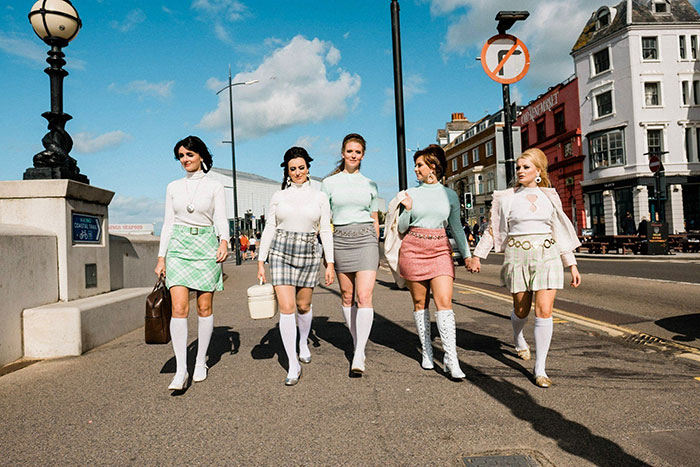
Who Invented the Miniskirt?
The fashion elite will forever argue among themselves as to the so called inventor of the mini. The true origin of this devious little fashion item is much more obtuse.
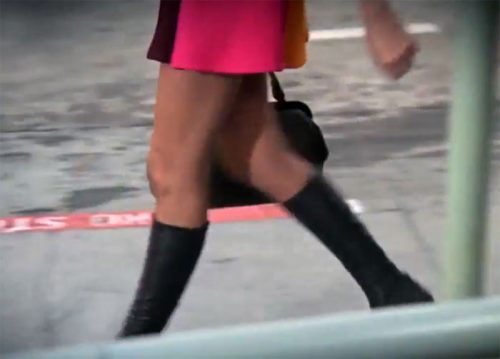
The Mini is often regarded as a British invention, specifically attributed to London designer Mary Quant. Her chic London boutique Bazaar began to produce them on demand as early as 1965.
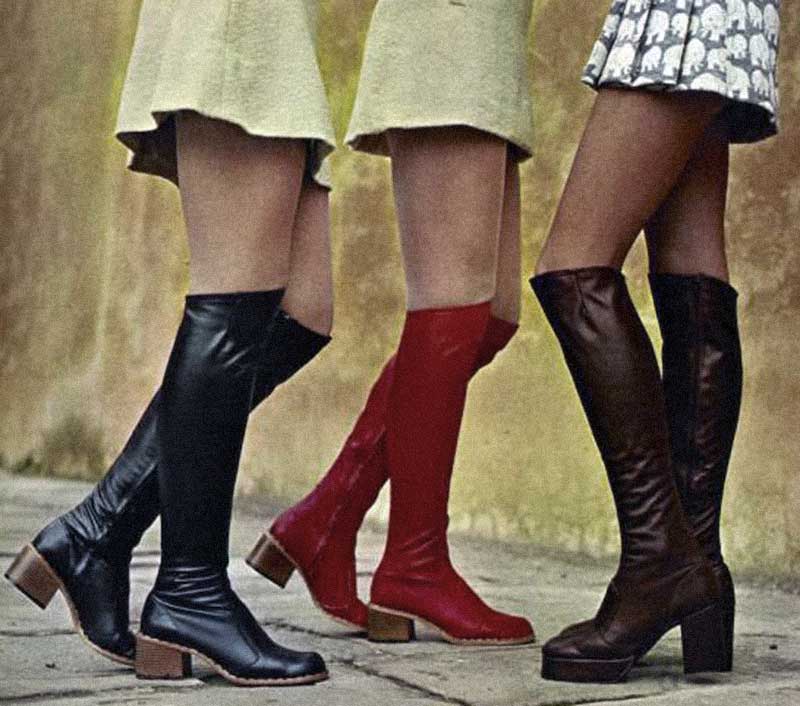
British Vogue claim it was John Bates. Others say André Courrèges. In the USA, Rudi Gernreich was the undisputed miniskirt designer, whose model muse Peggy Moffit became every bit as iconic as Britain’s Twiggy. However Mary Quant maintains that to some extent the mini skirt ‘invented itself’.
Mini Skirts of the 1960’s – 1960’s Fashion Film
Groovy Miniskirt Dancer celebrates the iconic 1960’s Mini Skirt.
We put this fun video together to celebrate mini skirts of the 1960’s. Footage courtesy of the public resources of the United States Governments National Archives and Records Administration.
Song by The Pattersons.
Mini Skirts Mania of the 1960’s
From footage by the now defunct British Central Office of Information, this film is a great peek in to the Swinging London fashion scene of the late 60’s. Carnaby street shops like the Lady Jane Boutique, and oodles of 1960’s mini skirts.
Song by The Patterson’s.
When did miniskirts become popular ?
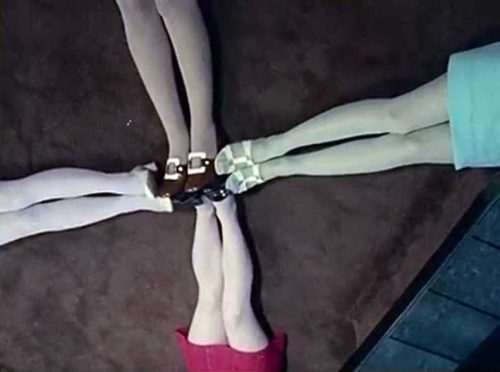
Necessity, as far as Mary Quant was concerned was the mother of invention. She recalled a pivotal moment from her teens, to fashion writer Colin McDowell, in his entertaining BBC documentary The Shock of the Knee.

As a youngster attending ballet lessons she saw a girl a couple of years older than her. She was wearing a short pleated skirt about 10 inches long, with a skinny black sweater, black tights and a bob haircut. “What struck me was how the whole outfit focused on what she had on her feet. A pair of white ankle socks, and a pair of patent tap shoes with ankle straps. I was spellbound by this lovely vision of legs and ankles.”
Origins of the Miniskirt
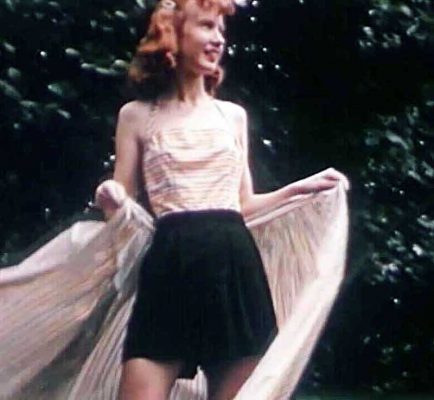
Even as far back as the 1940’s, there was the ‘beach skirt’, which was, in effect – a mini. Quite acceptable those days as a form of swimwear. Wearing one on the high street with a pair of knee high boots would have been another matter entirely.
1965 – The Miniskirt Youth quake
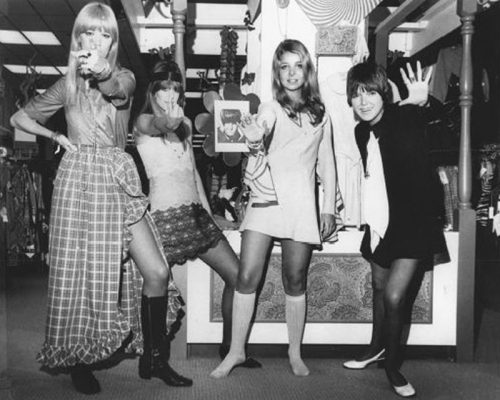
While André Courrèges had shown Paris a glimpse of thigh in 1964, there is no getting away from the impact of the launch of Mary Quants Fall fashion line on September 1st 1965. It was dubbed the “Youth quake” by Vogue magazine’s Diana Vreeland
Later that month, the New Yorker reported the Mary Quant look that “features short hair, short skirts and sculptured lines as opposed to froufrou; it relies on clever seaming and clarity of line.”
In New York, the chief designer at the Paraphernalia boutique, Betsey Johnson, was another cheerleader for the youth quake movement. “London flipped my whole thing!” she exclaimed. Betsey was an innovative designer whose involvement with the New York underground movement led to the early punk looks of the 1970’s
Jean Shrimpton and that Mini dress
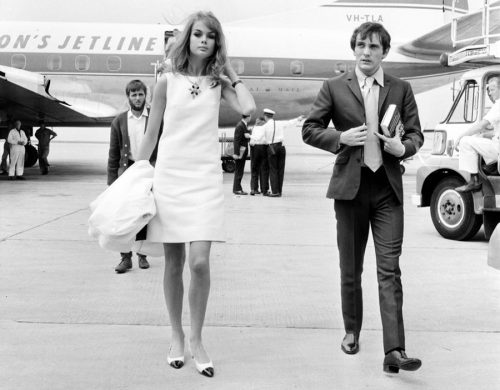
On October 30th 1965, Derby Day at Flemington Racecourse, Melbourne, Australia was treated to the sight of model Jean Shrimpton. The epitome of youthful, coltish beauty, she picked her way across the grass wearing a simple white shift dress by Colin Rolfe in Mary Quants Youth quake style.
The Sun newspaper reported that the worlds highest paid model was “in a dress five inches above the knee, NO hat, NO gloves and NO stockings !
It proved to be a pivotal moment for young Australian women at the time as journalist Helen Elliott remembers.“Most astoundingly that little mini-dress was 3.9 centimeters above her knee. I blinked. A goddess. Here, at the Melbourne Cup, this perfect girl existed. I was deeply, instantly in love.”
Mini Skirts Forever
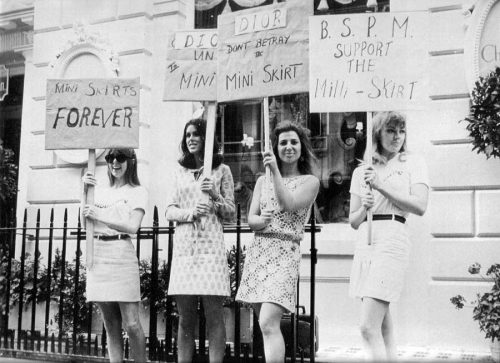
Paris made no bones about their opinion of the mini-skirt. With a few exceptions, they were frowned upon.
In 1966, Women from the British Society for the Protection of Mini Skirts staged a colorful protest outside the House of Dior in 1966 when they failed to include the mini in his new collection.
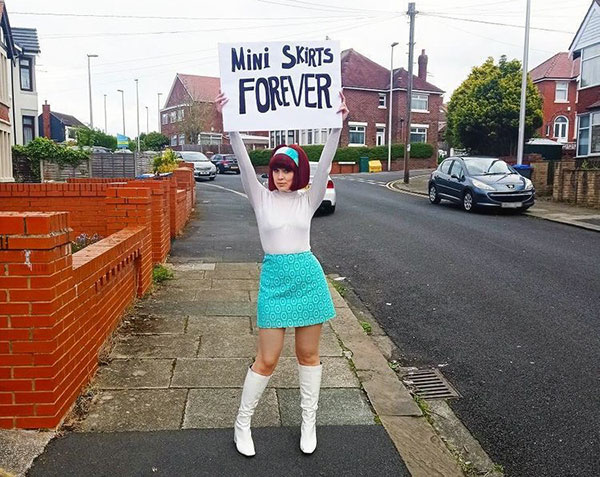
The British and the Miniskirt
It’s hard to argue with the contention that the miniskirt was owned by the British. Models like Jean Shrimpton, Twiggy, Grace Coddington, Penelope Tree and Pattie Boyd, all encapsulate the Swinging Sixties in a manner that conservative America had trouble matching. Diana Rigg as Emma Peel in The Avengers, often sported minis. Quant reputedly named the mini after her car – the mini cooper, another British icon.
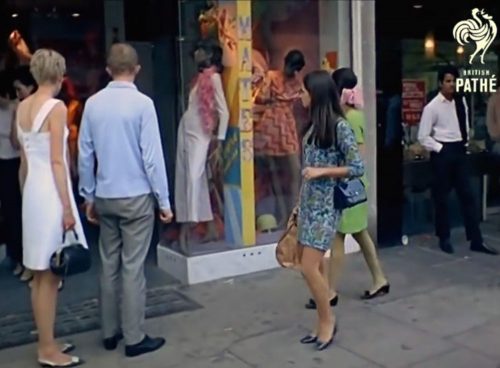
The London Look of Mary Quant, the Biba boutique, and Vidal Sassoon, all perfectly mirrored the music invasion of The Beatles and Rolling Stones. So why shouldn’t they claim the miniskirt as theirs?
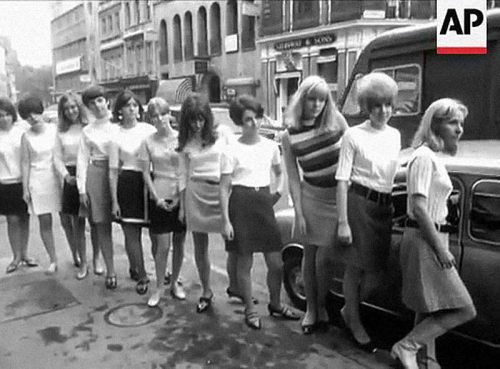
They even set a world record in July 1966 when British Movietone decided to see how many girls in mini-skirts they could get in to a tiny Mini car. The answer was 15 !
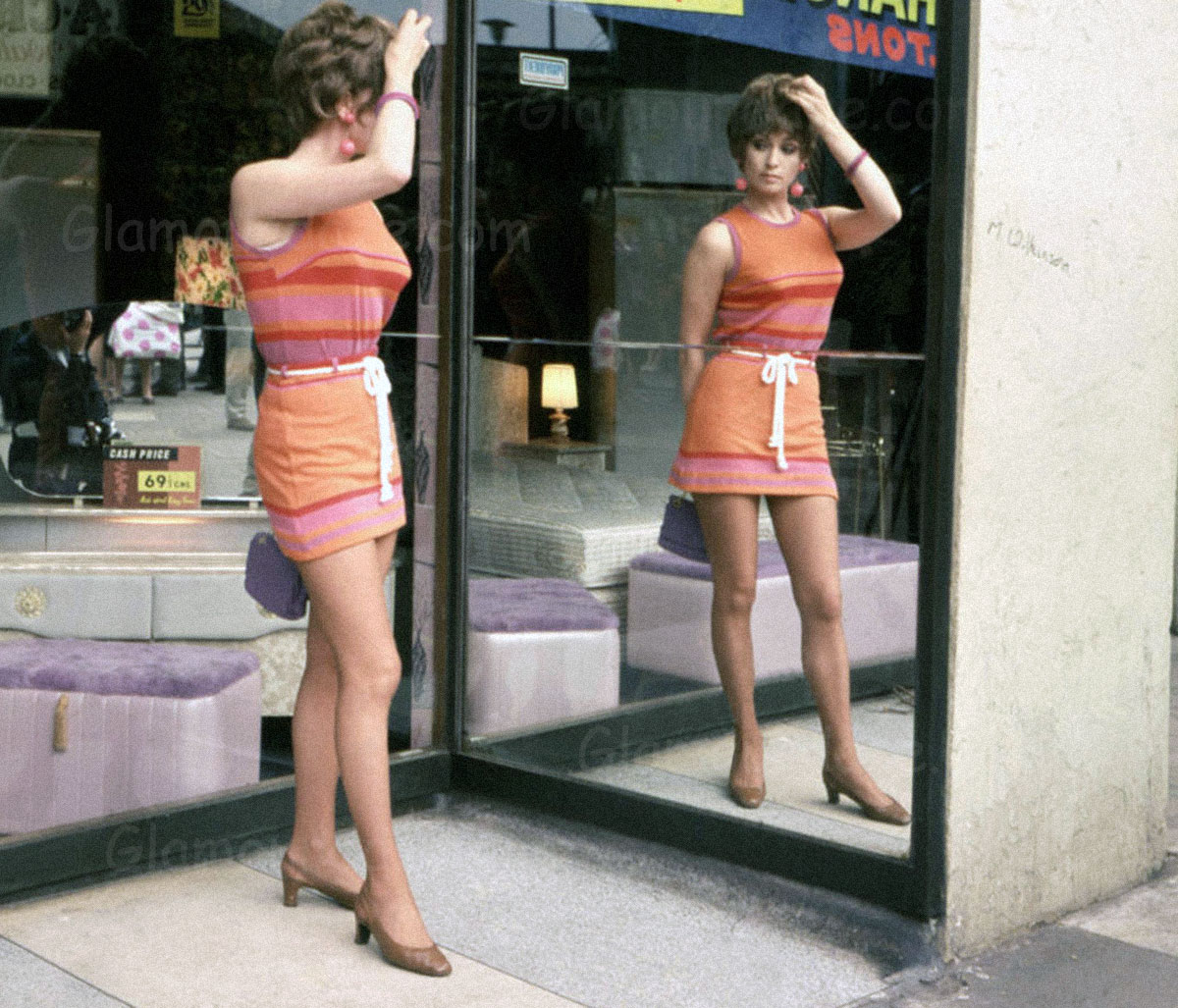
In 1968, Suzy Kendall‘s upper class Chelsea girl in Up the Junction wore the mini skirt to great effect in a pivotal movie on British social class.
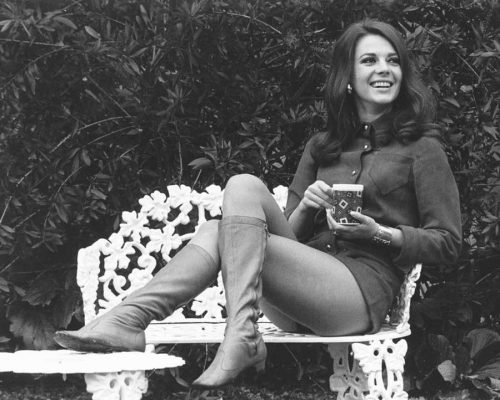
The arrival of tights or Panti-legs, as they were first marketed by their creator Glen Raven in 1959 played a considerable role in increasing the desire to wear shorter skirts in the 1960’s. By 1967 the combination of boots, tights and miniskirts became a fashion staple in winter wear for young women.
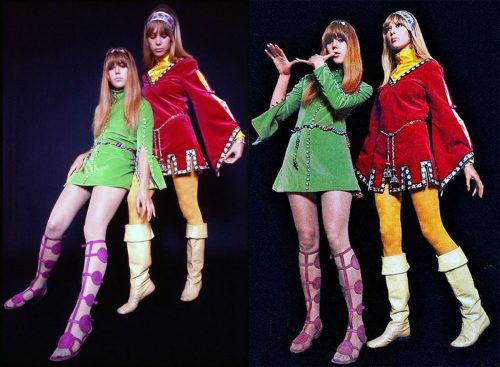
The Beatles Apple Boutique got in to the fashion scene by employing Dutch design collective The Fool. Here sisters Patti and Jenny Boyd model some hippy mini skirts in 1967. Note those gladiator sandals !
Iconic Screen Appearances of the Mini-skirt
The impact of Hollywood, and later, Television, should never be underestimated, as far as the acceptance of the miniskirt was concerned.
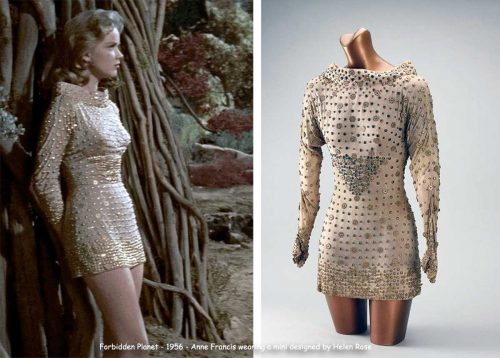
Before the mini became street fashion, it had quite notably made a screen appearance in 1956 , albeit as a stunning gold mini dress, worn by actress Anne Francis in Forbidden Planet.
Her entire wardrobe of several different mini dresses were designed by costumer Helen Rose.
So was it Helen Rose who invented the Mini? Probably not, though she is long overdue some credit.
Even before Forbidden Planet, miniskirts had popped up on a 1950 US Sci-fi show Space Patrol, worn by actresses Virginia Hewitt and Nina Bara.
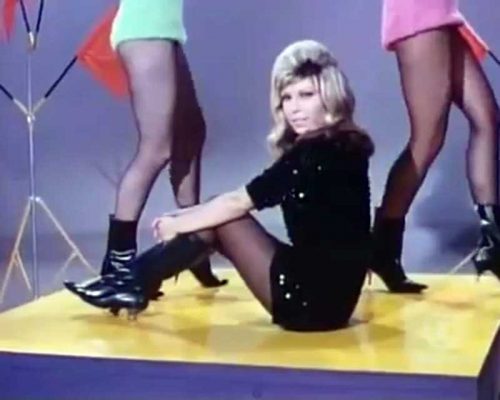
In 1966, Nancy Sinatra cemented her place in the miniskirt hall of fame with her pop video promo for These Boots Were Made for Walking. Those strutting go-go boots still knock the eye sideways more than 50 years later.
As far as screen debuts go, it was late 1966, when the female cast of the seminal sci-fi series Star Trek, boldly going where no women had gone before, gave us the shortest miniskirts ever seen.
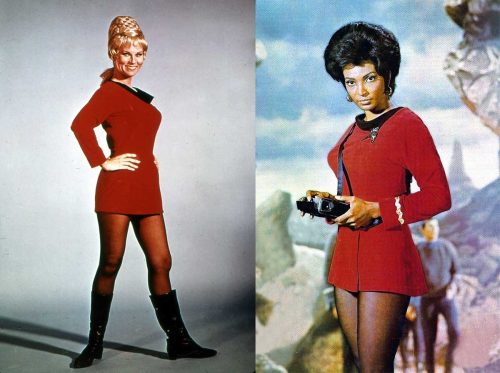
Actress Grace Lee Whitney who played Yeoman Janice Rand, suggested to costume designer Bill Theiss. that he dispense with the androgynous pant suits of the earlier episodes for the more fashionable mini-skirts, tights and boots instead.
The ground breaking African American actress Nichelle Nichols, who played Lt.Uhuru, had no problem with wearing the mini.“It was 1960s sexual liberation and besides, they were very comfortable”
Whitney and Nichols agreed that mini-skirts, though considered a tad risque, were personally preferable to young women of that era.
Now that Star Trek had paved the way, other sci fi tv shows like Lost in Space and Land of the Giants got in on the act too.
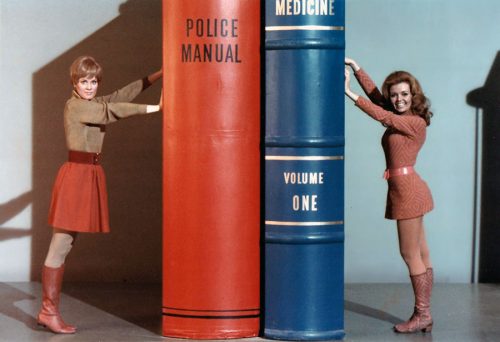
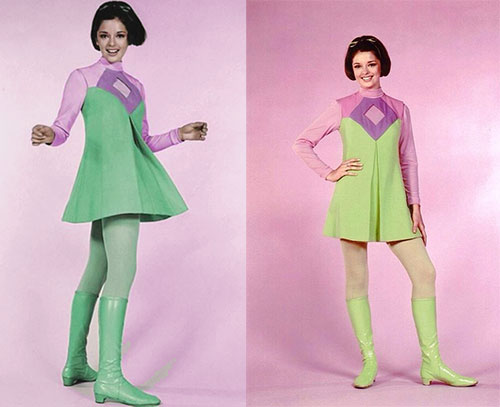
The Shock of the Knee
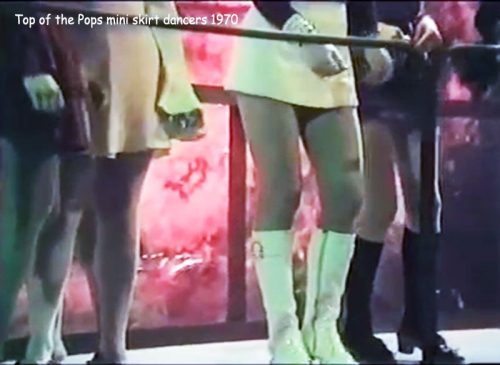
By 1969, skirt hems had rocketed well beyond the knee to the upper thigh, and could go no higher. Only the brief hot pants fashion fad of 1971 would go that bit further. Mini Skirts and gogo boots featured weekly on national British television screens via the BBC’s seminal music chart show Top of the Pops.

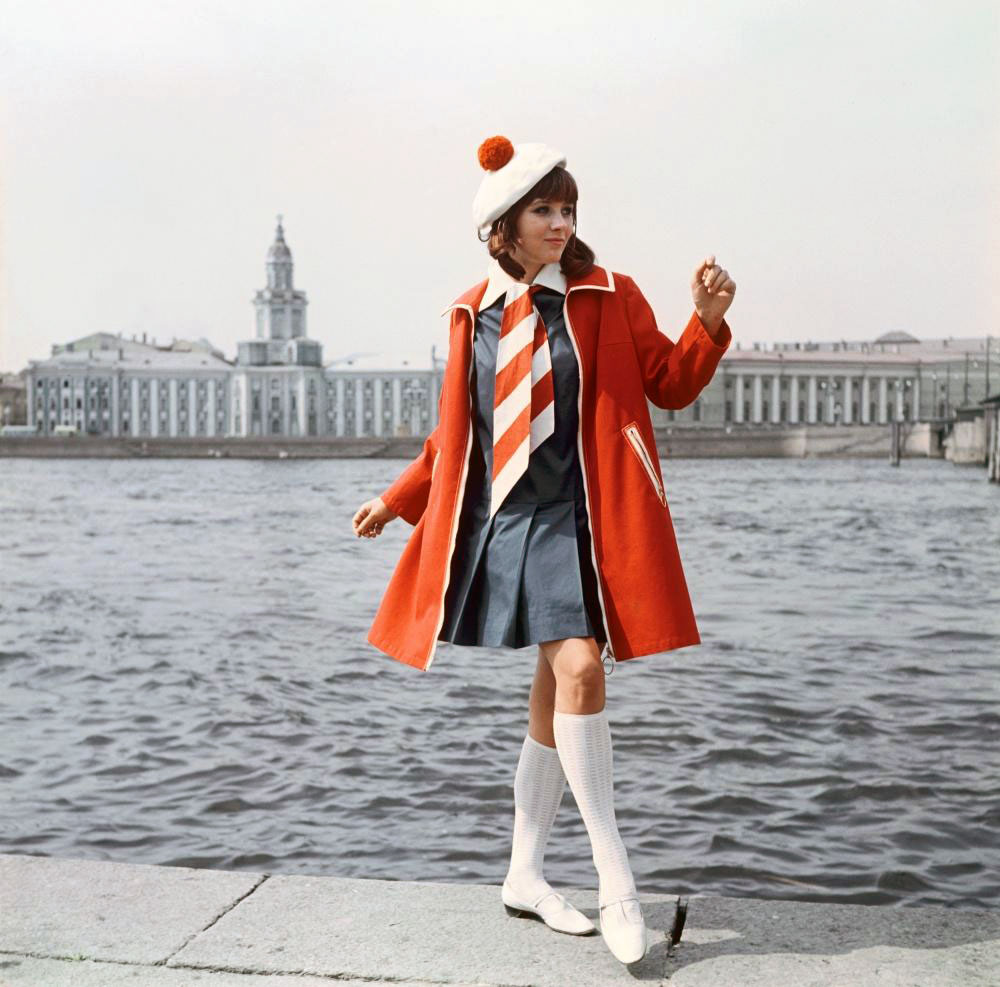
In the Far East, young Japanese women embraced it enthusiastically. The mini had even crossed the Iron curtain in to Soviet Russia.
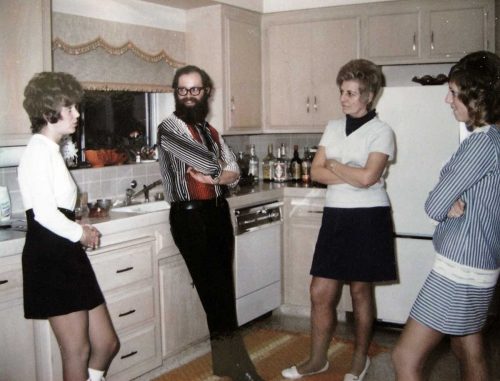
By 1970 the fashion industry had moved on to the midi and maxi skirt. But the horses had bolted. Minis were now a staple wardrobe item for young college going women.
Sexist Portrayals of the mini skirt
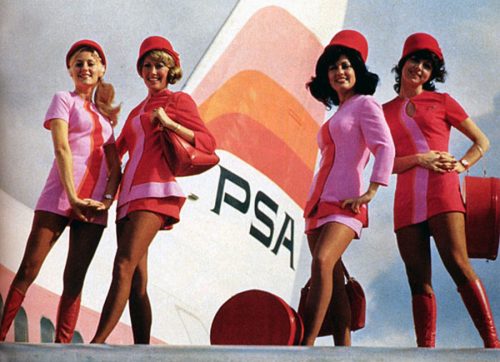
Of course, it was inevitable that there would be some patriarchal misuse of the mini skirt. The doll like uniforms of these PSA flight attendants raised eye brows in airports across the world. Advertising took to employing the beguiling mini-skirt extensively too.
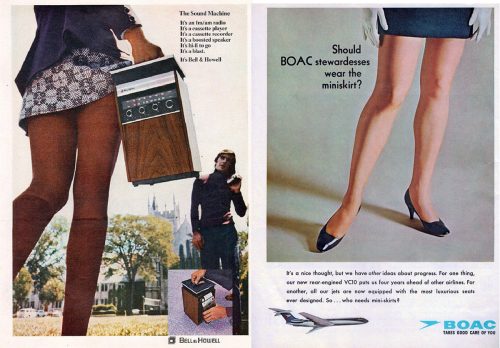
But the mini has prevailed. Previously a clothing item for the young, the new millennium has no problem with women in their fifties or older wearing miniskirts. The shock of the knee has finally passed.
That’s all !
©Glamourdaze
